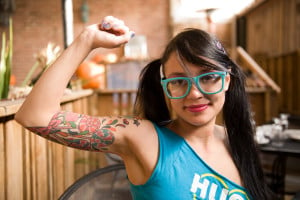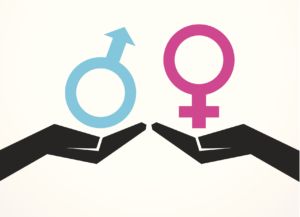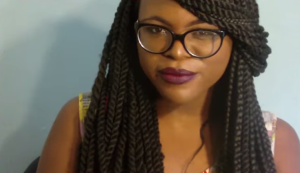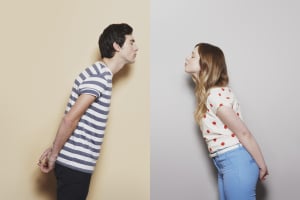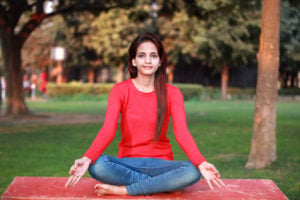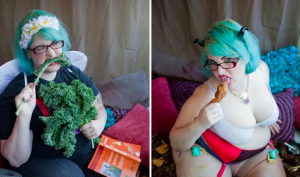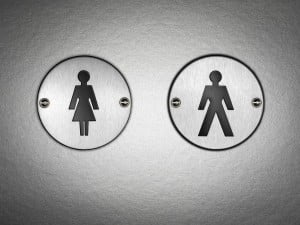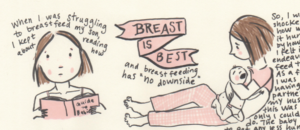Jon: Here I am, Dad! Here I am!
Dad: Yeah there you are! Hello!
Jon: I don’t think there is a certain point in anyone’s life where they grow up. I think that we’re growing up all the time and we always will be. My name is Jon Novick, I am 22 years old, and I am a dwarf with Achondroplasia.
Before I was even born, my mother studied genetics in graduate school. Specifically she had interest in Achondroplastic dwarfism that she did a study on.
Achondroplastic dwarfism is the kind of dwarfism that I have. So when I was born she had a lot of extra information and she had a lot of books to help her parent me. The definition for dwarfism is the abnormal underdevelopment of the body characterized predominantly by extreme shortness of stature.
Now there’s a lot of different kinds of dwarfism, as I mentioned before, and the most common kind is the kind that I have, which is Achondroplasia.
Achondroplasia is characterized by disproportionately short limbs, a normal sized torso, large head and with a depressed nasal bridge, right here, a small face and stubby hands as well as the curvature of the spine.
The term is dwarf or little person. One or the other is totally fine, just not midget.
A lot of times midget is thrown around as the term to describe someone who has dwarfism and not only is that incorrect but it’s incredibly offensive.
I moved to New York City about a year ago and although I consider it ultimately a good experience, it was made a lot more difficult because of my dwarfism.
(video flashback) I hit it!
I grew up in a small town, and I would have negative encounters every now and then but for the most part I had friends and I had family who supported me. School wasn’t a nightmare and I just was able to have a pretty average childhood.
A year ago when I moved to the city I noticed that there was a lot of people. There was a lot, a lot of people and because of that I had a lot of encounters. I would have people that’d take pictures of me on the subway. I would have people that would harass me and just all of these things.
All of these almost daily occurrences and they would continue happening, continue happening, until it got to a point where I just got fed up with it.
I wanted to stop telling people what happened to me and I wanted to start showing people what happened to me. I wanted to show everyone what a day in my life was like.
I was fortunate enough to be able to use this camera, which is actually known as a button camera because the lens I’m going to be using is so tiny it has a button cover-up that I’m going to be slipping through a shirt that will be completely unnoticeable.
So we’re all packed up, the camera is already and going. I’m going to turn it on right now. It’s rolling. We’re going to go see what we can capture. So let’s head out.
Small Child: What is he?
Person at Table: Have you been on TV?
Jon: I have not.
Person at Table: Do you know who you look like?
Jon: Who?
Person at Table: Have you ever seen that show Little People Big World?
Jon: Yeah.
Person at Table: Yeah. You look like the son, man.
Jon: I do?
Person at Table: Yeah.
Jon: Why is that? I just do? Do you see a lot of little people?
Person at Table: Man, I’m from Oklahoma.
Jon: Oh yeah.
Random Person: Little midget. Big man, big penis.
Jon: What? What did you say?
Random Person: Hey short stuff!
Jon: Wow.
Person at Table: I hope I didn’t offend you.
Jon: Oh no. No, it’s okay. No I appreciate that. No it’s fine.
Person at Table: Can I get your picture?
Jon: Nah.
Random Person: You from one of the show with the little people?
Jon: Not that I know of. No, I’m not.
Random Person: Oh, you look like that [inaudible 00:05:14], the guy!
Jon: I don’t want to tell anyone what to do, or what to think, or how to feel, but instead, what I’ll do is I’ll ask.
I’ll ask that the next time you see someone who is different than you think about what their day might be like.
Think about all the events of their life leading up until that point. Then think about their day and think about what part of their day do you want to be.






